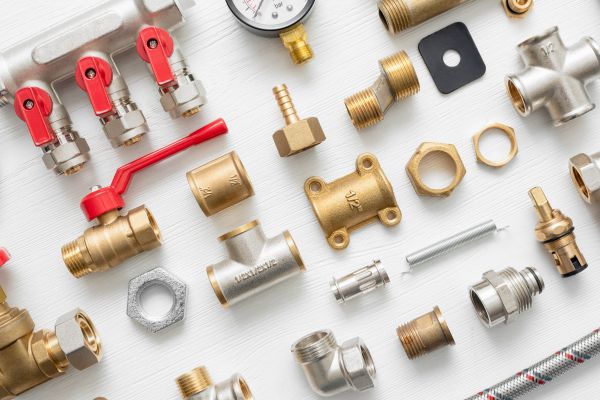Why Bathroom Sink Plumbing Matters
Bathroom sink plumbing might seem mundane, but it’s the unsung hero of your daily routine. Imagine waking up to clogged pipes or a leaky faucet—ugh, what a hassle, right? Knowing the ins and outs of bathroom sink plumbing isn’t just for professionals; it’s for anyone who values a functional home. With a bit of knowledge, you can handle minor issues, save money, and even impress yourself.
Let’s dive into the world of pipes, traps, and drains. Trust me—it’s not as complicated as it sounds!
Anatomy of Bathroom Sink Plumbing
Before jumping into troubleshooting or installation, you’ve gotta know what you’re working with. Here’s a breakdown of the essential components:
- Faucet: Where water flows out.
- P-Trap: That U-shaped pipe under the sink. It traps debris and prevents sewer gases from entering your home.
- Drain Pipe: The route water takes to leave your sink and enter your plumbing system.
- Shut-off Valves: Located under the sink, these allow you to control the water flow.
- Supply Lines: Pipes that bring hot and cold water to your faucet.
How Does It All Work Together?
When you turn on your faucet, water travels through the supply lines, mixes (if needed), and exits through the spout. Gravity pulls the wastewater into the drainpipe, through the P-trap, and out into the main sewage line.
Common Bathroom Sink Plumbing Issues
1. Clogged Drain
Hair, soap scum, and toothpaste—oh my! These are the usual suspects behind slow or clogged drains.
Quick Fix:
- Use a plunger or a drain snake.
- Pour boiling water down the drain to dissolve soap buildup.
- Mix baking soda and vinegar for a natural solution.
2. Leaky Faucet
Drip, drip, drip… That annoying sound isn’t just irritating; it’s wasting water and money.
What To Do:
- Replace the faucet washer or O-ring.
- Tighten loose connections using a wrench.
3. Low Water Pressure
Ever turned on the faucet only to be greeted by a trickle? Low water pressure is often caused by mineral buildup.
The Fix:
- Clean the aerator (the screen at the tip of your faucet).
- Check supply lines for blockages.
DIY Bathroom Sink Plumbing: Step-by-Step
Feeling brave? Here’s how to tackle basic bathroom sink plumbing tasks:
Replacing a P-Trap
- Gather Tools: Wrench, bucket, replacement P-trap.
- Turn Off Water Supply: Always a must before starting.
- Unscrew the Old Trap: Place a bucket underneath to catch water.
- Install the New Trap: Ensure all connections are tight but not overtightened.
Fixing a Leaky Pipe
- Identify the Leak: Look for dripping water or damp spots.
- Apply Plumber’s Tape: Wrap it around the threads of pipe connections.
- Replace the Pipe: If the damage is severe, swap it out for a new one.
Installing a New Faucet
- Turn Off Water: Shut off both hot and cold supply lines.
- Remove the Old Faucet: Unscrew the nuts and disconnect the supply lines.
- Install the New Faucet: Follow the manufacturer’s instructions, ensuring a snug fit.
Pro Tips for Maintaining Bathroom Sink Plumbing
Want to avoid future headaches? Follow these tips:
- Use Drain Guards: They catch hair and debris before it clogs your pipes.
- Clean Regularly: Wipe down the sink and faucet to prevent grime buildup.
- Inspect Pipes Annually: Check for leaks or corrosion.
- Avoid Chemical Cleaners: They can damage pipes over time. Stick to natural alternatives.
FAQs About Bathroom Sink Plumbing
1. What’s the average lifespan of bathroom sink plumbing?
With proper maintenance, your plumbing system can last 20-50 years. Components like faucets and P-traps may need replacing sooner.
2. How do I know if my P-trap is clogged?
Common signs include foul odors, slow drainage, and gurgling sounds.
3. Can I install a bathroom sink by myself?
Yes! With the right tools and a step-by-step guide, installing a sink is a manageable DIY project.
4. Why does my bathroom sink smell bad?
A clogged or dry P-trap is usually to blame. Run water to fill the trap, or clean out debris to fix the issue.
5. What’s the best way to prevent clogs?
Use a drain strainer, avoid pouring grease or oil down the drain, and clean it weekly with natural solutions.
Summary
Bathroom sink plumbing might not be glamorous, but it’s essential. From understanding its components to fixing common problems, a little know-how goes a long way. Whether you’re unclogging a drain or replacing a leaky faucet, these tips empower you to tackle plumbing challenges with confidence.
Authoritative Sources for Further Reading
- DIY Plumbing Tips: https://www.familyhandyman.com
- Bathroom Plumbing Basics: https://www.thisoldhouse.com
- Eco-Friendly Plumbing Solutions: https://www.epa.gov



